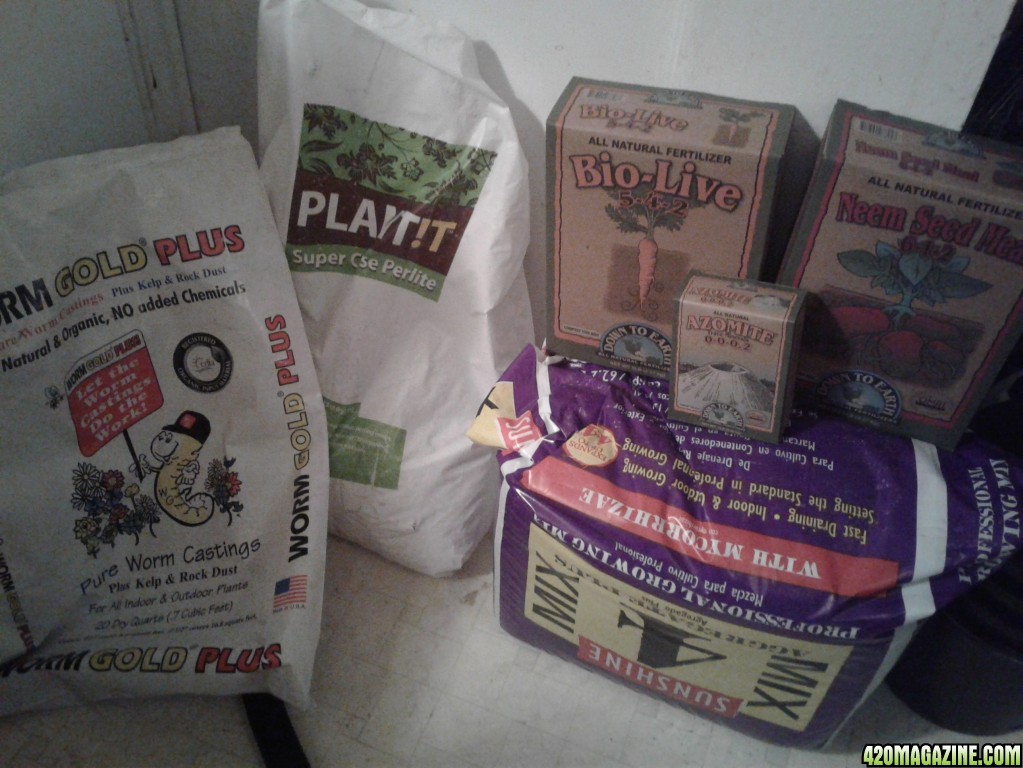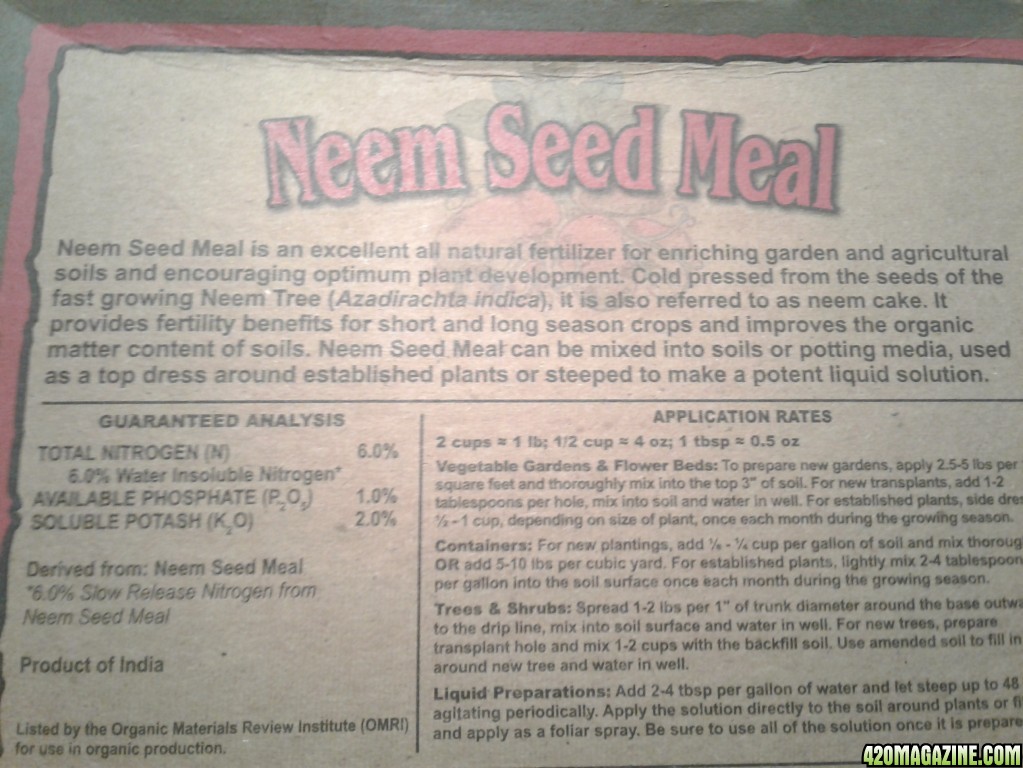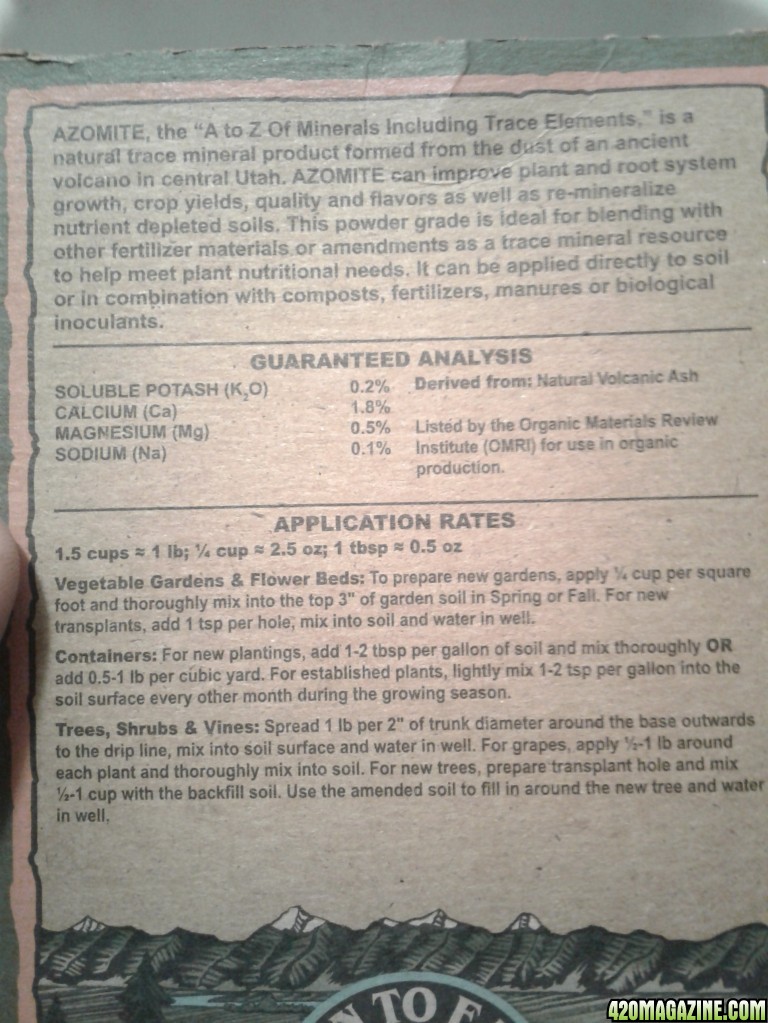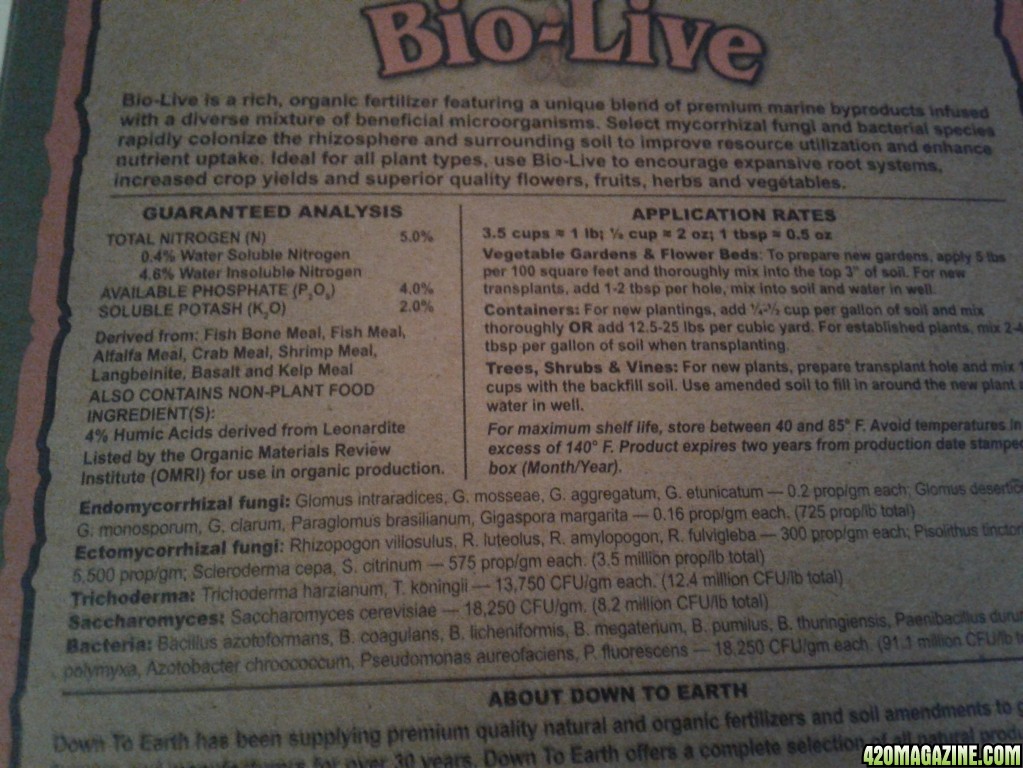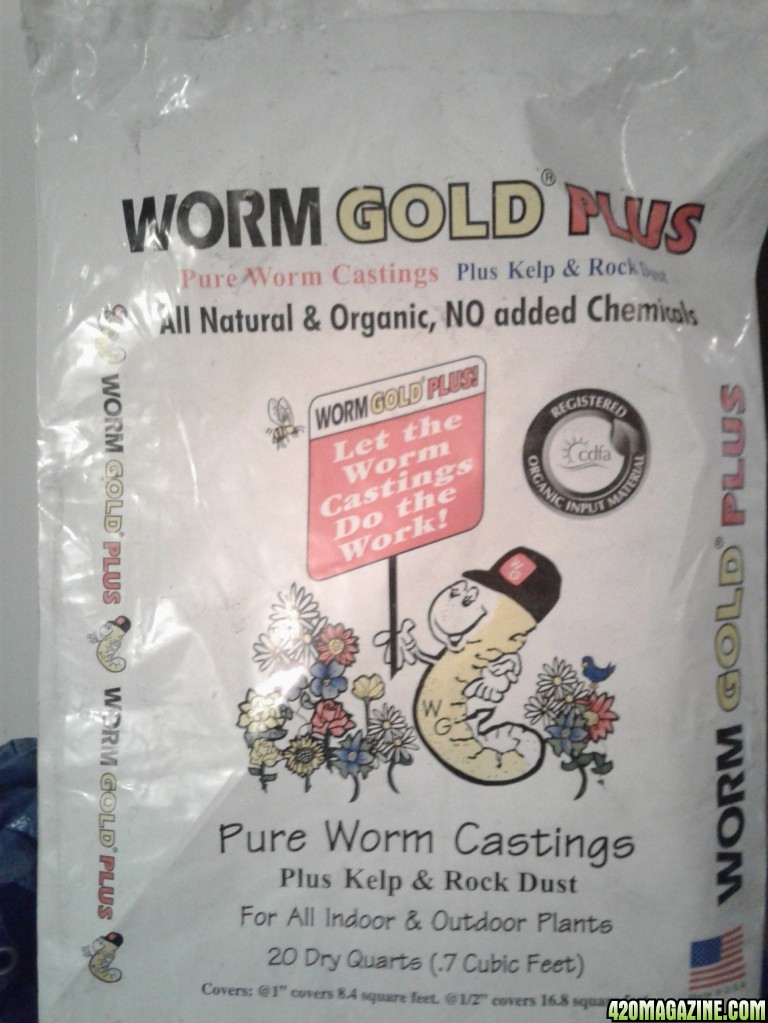Hey guy's wondering if I could get some guidance with mixing my own soil. Not trying to re-invent the wheel or go totally custom, but just trying to work with inputs I can source locally and affordably. This is what I've gone with so far. Trying to mimmick Coot's recipe.
Sunshine Mix 4 with Myco ( 70% Peat Moss, perlite, and dolomite lime)
Super Coarse Perlite
WormGold Plus Earthworm Castings (Plus Kelp Meal and Rock dust)
Down to Earth Bio-Live
Down to Earth Neem-Seed Meal
Down to Earth Azomite
Basically I did...
2/3 Perlite and Sunshine Mix 4
1/3 EWC
into 2.4 cu ft, basically an 18 gallon tote
Into that I mixed 8-9 cups of the Bio-Live, 2 1/4 cups of the Neem-Seed Meal (misread directions, twice as much as box said

), and 18 tbsp of the Azomite.
Watered it until it kinda clumped in my hand and then fell apart. Letting it "cook".
So basically I have...
Fish bone meal
Fish meal
Alfalfa meal
Crab meal
Shrimp Meal
Kelp Meal
Langbeinite
Basalt
Leonardite
A bunch of fungi and myccorrhizals
(^All that just in the Bio-Live!^)
Azomite
Neem Seed Meal
Earth Worm Castings ( With "Rock Dust" and Kelp Meal, no more information )
Peat Moss
Perlite
I'm just worried that because I diluted the Sunshine Mix so much that the dolomite lime in it isn't going to do much so far as pH buffering, but from what I understand ( which ain't much ) the microbes and various soil life are supposed to control the pH. Also another reason why I picked Bio-Live, as it seemed like it had a good biological payload in terms of fungi and bacteria.
Anyway, I know it really isn't close to as customized as most people make their soils, but I'm hoping this "custom" mix will feed my plants with just water at least through flower? I was thinking of making a similar mix, but with just the Sunshine, Perlite and EWC for seedlings and younger plants. Maybe just the Peat Moss, but all the bales of that are HUGE and more costly than the Sunshine Mix 4 up front. I just don't have the space to store all that soil, nor the need. So hoping the Sunshine Mix 4 is like a good way to get a mostly Peat Moss base. Will also try to get some compost into the mix when I recycle it, but I haven't even got my bins going.
Thoughts? Questions? Criticisms? Tar and feathers?





